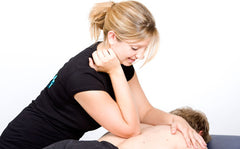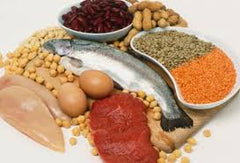BEST RECOVERY METHODS FOR TRIATHLETES
Rest And Recovery Might Be The Most Important Training You’re Not Doing
There’s an explosion of products on the market today that want to help you recover better or faster. We have written this article to try to help triathletes navigate the hype and get the most out of your body’s natural rebuilding efforts.
Cutting Through The Myths: We Dissect The Methods
With the staggering amount of recovery drinks, bars, clothes and devices on the market, it seems like it: Just do this...or wear that and you’ll spring out of bed in the morning, ready for your next interval session.
“The world of recovery is a mixture of folklore and some science,” says William Sands, Ph.D., former director of the Recovery Center at the Olympic Training Center in Colorado Springs, Colo. He hears the “I saw an athlete do "X" so it must work” reasoning. “It’s not always wrong, but much of the time it is. And unfortunately, a lot of the science that should be straightening out all of these recovery questions is still in the beginning stages,” says Sands, who’s currently the director of education at the National Strength and Conditioning Association.
Here’s the truth about some of the more popular methods used by athletes:

Compression Apparel
Elastic compression stockings have been used medically in preventing and treating aching, tired, heavy legs, leg and ankle swelling (edema), varicose veins and spider veins. Additionally, these medical garments are used as a compression therapy for post-sclerotherapy, lymphedema, chronic vein insufficiency (CVI), deep vein thrombosis, and other vein disorders and diseases.
Manufacturers claim that wearing compression stockings can optimize blood flow, reduce leg fatigue, reduce muscle soreness, prevent injury, help remove metabolic byproducts, dampen muscle vibration, and thereby increase endurance and improve running performance.
Guidelines for timing include: always on flights and long car rides, immediately after hard efforts, and when sitting (desk job) or standing (on-feet job) for extended periods of time.

Ice Bath
Cold-water immersion is cheap and can help reduce immediate soreness. All you need is a tub and ice or a cold river/lake and a thermometer (approximately 55 degrees F).
It may be ideal to use compression immediately after exercise and then ice three hours after exercise for 10–15 minutes to allow normal protein synthesis to occur. It’s possible that even though ice may reduce immediate muscle pain/soreness, it may inhibit overall recovery if used too early after effort.

Massage
A massage, foam roller, lacrosse ball, rolling stick, etc., can bring muscles back to homeostasis. If you address adhesions or knots in the soft tissue on a regular basis, it can be extremely beneficial as both a recovery tool and an injury-prevention technique.
The best time for a massage is three hours or longer after a race or hard effort. A 2009 study in the British Journal of Sports Medicine concluded that massage immediately after intense effort inhibited the body’s ability to remove lactate from muscle.

Active Recovery
An easy spin on the bike or short, low-intensity run can help improve your recovery.
Research suggests that active recovery can “flush” the body and legs in the early and immediate phase and, along with compression, should be considered as an immediate recovery technique.

Nutrition
Exercise has a profound effect on muscles in the body. There must be a positive muscle protein balance or muscles will break down. Exercise improves muscle protein balance, but in the absence of proper food intake there is a negative balance. This response by the body lasts about 24-48 hours following exercise. It is critical that athletes address protein metabolism during this period as it will determine the impact on muscle hypertrophy. Amino-acid availability is an important regulator of muscle protein metabolism. We recommend athletes address this through a diet high in proteins or through a system of daily essential amino-acids supplementation (those amino acids not produced by the body), as well as a source of L-Glutamine, which has been shown to reduce muscle soreness.

Rest
Of course, there is no substitute for recovery days and good sleep. Resting when your body needs it and creating low-stress environments will always be an ongoing top priority. Using a coach and understanding key metrics of body response to training (such as heart rate recovery) need to be coupled with recovery methods based on science, with careful attention to timing.
EnduroPacks offers the highest quality all-natural daily system of vitamins and minerals for endurance athletes. Our system contains a 30-day supply of 4 essential products: a Liquid Multivitamin, Concentrated Electrolyte Spray, Essential Amino Recovery Patch, and the L-Glutamine Recovery Complex. EnduroPacks products are GLUTEN-FREE, manufactured in the USA, contain no GMOs, and are 100% vegetarian. Visit our site at www.enduropacks.com.
Also in Blog

Dropping Unnecessary Sugars In Your Sports Drink Is Easy
We need to hydrate. But how can you hydrate and replace electrolytes without the harmful additives like sweeteners and artificial flavoring common in sports drinks that are harsh on your stomach?
